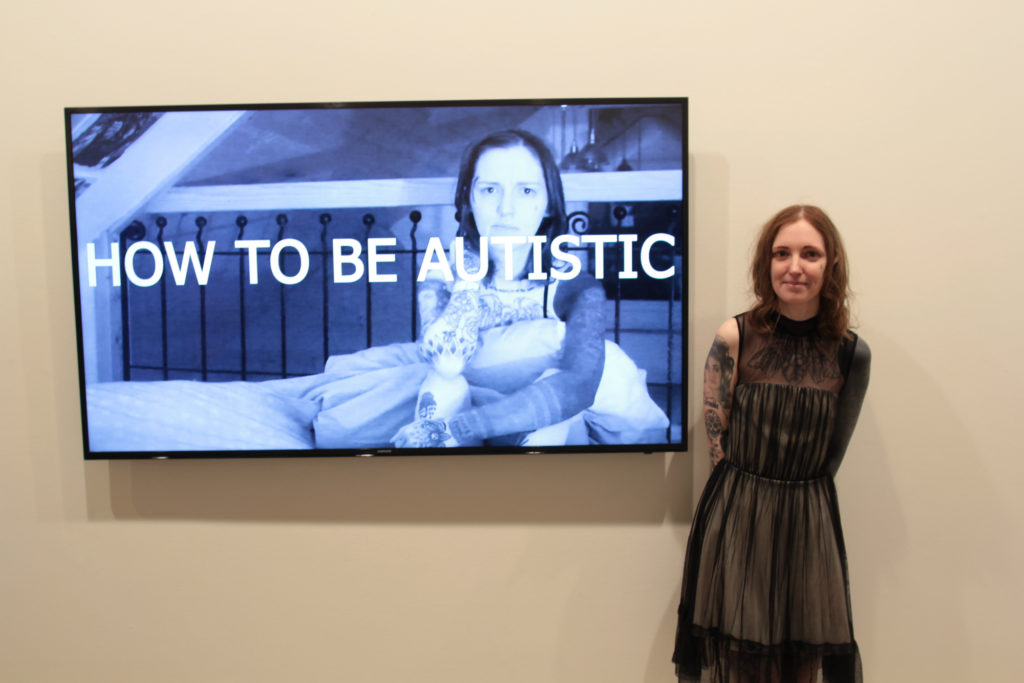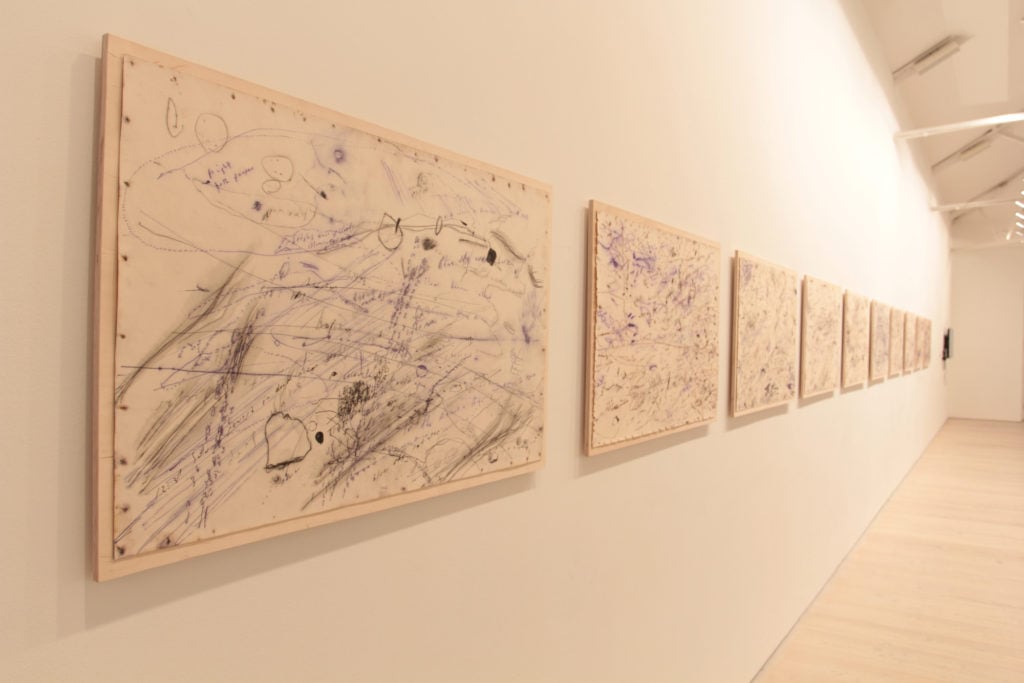Art & Exhibitions
A Powerful Video About an Artist’s Struggle With Autism Wins the Inaugural Spectrum Prize
Charlotte Amelia Poe’s video self-portrait was the unanimous choice for a new award for artists on the autistic spectrum.

Charlotte Amelia Poe’s video self-portrait was the unanimous choice for a new award for artists on the autistic spectrum.

Javier Pes

A compelling video self-portrait called How To Be Autistic by Charlotte Amelia Poe, who is a self-taught artist from Suffolk, in the east of England, was the judges’ unanimous choice for the inaugural Spectrum Art Prize, which celebrates excellence by an artist on the autistic spectrum. The prize was announced yesterday, May 1, at London’s Saatchi Gallery.
Poe’s work and that of the six other finalists were shown at the gallery in a two-day exhibition, which the autism charity Spectrum hopes will travel. Poe receives a £10,000 cash prize together with curatorial support while the six other finalists each receive £1,000.
The award had a distinguished panel of judges, including the Turner prize-winning artist Mark Wallinger, Turner prize nominee Ray Billingham, the independent curator Sacha Craddock, and the director of the Autism Research Centre at the University of Cambridge, Simon Baron-Cohen.
Speaking at the award ceremony, Craddock stressed that the finalists’ art was chosen for its excellence and “not as art therapy.” She admitted that she was not a fan of confessional videos but Poe’s work was much more than that, she said. It was an account of “lived hell and ultimate triumph,” Craddock said.
For the work, the artist filmed herself in her bedroom. She appears distressed and it’s hard to hear her words. Her monologue starts in a very dark place, reflecting on years of anxiety attacks, self-hatred, and self-harm because of her condition and her treatment by others. “People are cruel for the sake of being cruel,” she says. “But,” she adds, “you are alive in spite of it.” The video ends on a defiant note. “You are fucking cosmic… your fear makes you powerful,” she says, as if addressing others with the condition, reminding them that “ordinary folk take what they see for granted.”
Wallinger called Poe’s film “unforgettable, the most explicit expression of having that condition. I have never heard it quite articulated like that.” Reflecting on what he had learned as a judge, Wallinger told artnet news that he now realized he has taught students with the autism. Wallinger said he was impressed that four of the seven finalists had made it through art school.

Peter Matthews’s drawings from the series “Hours In and With the Atlantic Ocean.” Installation view at the Saatchi Gallery. Courtesy of Spectrum, photograph by Tom Besley.
One of artists, Peter Matthews, studied fine arts at Nottingham Trent University and won the Hugh Casson Drawing Prize in 2017. His contribution was a remarkable series of drawings done while standing in the sea in Cornwall, sometimes for up to 12 hours. The scratchy mark makings and scribbled words record the experience and the passage of time and tides as he stands in a wet suit up to his waist with a plank as a drawing board. An ordeal for most, for Matthews drawing in the Atlantic Ocean provides a sense of security and serenity, he says.
Meanwhile, the self-taught artist Nnena Kalu’s large and colorful sculptures also impressed. They are made from bundling and wrapping found materials and responding to the sounds they make. Craddock praised the way that, unlike many artists, Kalu “knows when to stop making [a work].”
View How To Be Autistic by Charlotte Amelia Poe here